Publisher: Amy Marson Creative Director: Gailen Runge Editors: Liz Aneloski and Karla Menaugh Technical Editors: Julie Waldman and Debbie Rodgers Cover/Book Designer: April Mostek Production Coordinators: Freesia Pearson Blizard and Tim Manibusan Production Editors: Alice Mace Nakanishi, Jennifer Warren, and Nicole Rolandelli Illustrator: Tim Manibusan Photo Assistant: Carly Jean Marin Style photography by Page + Pixel and Carly Jean Marin and instructional photography by Diane Pedersen, unless otherwise noted Published by Stash Books, an imprint of C&T Publishing, Inc., P.O. Box 1456, Lafayette, CA 94549 Dedication This book is dedicated to all the makers, designers, doers, sewists, and DIYers out there. Go big, go bold, and listen to yourself when designing your space. After all, youre the one whos living there! Acknowledgments I want to thank my family for their never-ending support of my creative pursuits. Thanks to my dad and mom, from whom I got a perfect blend of work ethic, go-get-em attitude, and creativity; to my brother and sister, who provided inspiration and technical support; and most especially to my husband, whose gourmet cooking, endless support, and pep talks kept me going. Thank you to everyone at C&T Publishing for making my dream a reality.
This book is dedicated to all the makers, designers, doers, sewists, and DIYers out there. Go big, go bold, and listen to yourself when designing your space. After all, youre the one whos living there! Acknowledgments I want to thank my family for their never-ending support of my creative pursuits. Thanks to my dad and mom, from whom I got a perfect blend of work ethic, go-get-em attitude, and creativity; to my brother and sister, who provided inspiration and technical support; and most especially to my husband, whose gourmet cooking, endless support, and pep talks kept me going. Thank you to everyone at C&T Publishing for making my dream a reality.
Project Skill Levels 1: Beginner 2: Confident Beginner 3: Intermediate 4: Advanced Introduction  From the first quillow my grandmother helped me make, my love of functional sewing projects was born. Ever since then, I have loved sharing and discussing tips, techniques, and tricks with eager sewists. When I bought my first home, I made a list of all the custom household items I wanted to design and create, and the various sewing techniques that would be necessary. This became the genesis for this book and the projects you will discover here. Within these pages youll find inspirational projects for a variety of skill levels and for every room in your homewhatever your style. If youre not in the mood to pull out the sewing machine, you can make fun projects that dont require one, such as the Cornice Board or the DIY Rug.
From the first quillow my grandmother helped me make, my love of functional sewing projects was born. Ever since then, I have loved sharing and discussing tips, techniques, and tricks with eager sewists. When I bought my first home, I made a list of all the custom household items I wanted to design and create, and the various sewing techniques that would be necessary. This became the genesis for this book and the projects you will discover here. Within these pages youll find inspirational projects for a variety of skill levels and for every room in your homewhatever your style. If youre not in the mood to pull out the sewing machine, you can make fun projects that dont require one, such as the Cornice Board or the DIY Rug.
If you dont have a lot of time but want to create something quick to impress your guests, try the Customized Sheets or Rolled-Hem Napkins. If youre new to sewing, start out with one of my basic projects like Fancy Flange Shams or the Quick and Easy Tablecloth. Soon enough youll be making lined and pleated Drapes or a Corded Throw Pillow. Together well cover the theory of design and how to choose a style that works for you. Well master the arts of installing invisible zippers, lining drapes, making custom lighting, and so much more. As you learn and are inspired, youll be able to transform your dwelling into a space that reflects your personality, your imagination, and your dreams.
Principles and Elements of Design Choosing fabrics for home-sewing projects doesnt have to be stressful. With a few basic tips and some knowledge of the foundations of design, youll be armed with what you need to make good design choices. When working on sewing projects for the home, its important to keep in mind that you may already have a sense of how you want the space to feel and a grasp of basic design theory. In this case, go with what makes you happy! If youre not familiar with the principles and elements, let me give you a quick introduction. The principles and elements work together to provide a visually pleasing space. In a way, the principles of design are the theory behind how to use the more concrete elements of design.
Youd plan a space using theory and apply the elements to accomplish your design. Its kind of like cooking: you can have all the ingredients, but unless you know how to prep those ingredients and in what quantities to use them, the recipe wont turn out very well. Heres an introduction to the elements and principles of design. Elements of Design  This gorgeous tile floor illustrates a pattern, one of the elements of design. Space (positive and negative): Patterns and designs can be made from both positive and negative spacethat is, the space that is your subject and the space that is not your subject. Shape: The two-dimensional outline of a geometric figure (such as a circle or hexagon) or an organic form.
This gorgeous tile floor illustrates a pattern, one of the elements of design. Space (positive and negative): Patterns and designs can be made from both positive and negative spacethat is, the space that is your subject and the space that is not your subject. Shape: The two-dimensional outline of a geometric figure (such as a circle or hexagon) or an organic form.
Form: The three-dimensional shape of an object, such as a vase or chair. Visual mass: The visual size or weight of an object. For example, a small bright red vase can have more visual mass than a larger white vase. The red coloring makes it feel more visually heavy. Line: Any type of connection between points. The connection can be curvilinear, straight, or zigzag.
It can be implied or actual. The alignment of furniture can make a line, just as a striped fabric has lines. Texture: Any natural or implied surface pattern. Texture can easily add warmth to a space. Pattern: Motifs or other elements arranged in an ordered way. Light (natural or artificial): Light can impact how other elements and principles are interpreted by the eye.
Color: Hues and values seen by the eye. Principles of Design Scale: The size of an object. Proportion: How elements relate to each other and the space around them in size. Keeping fabric and other design elements in proportion to the space is important. A super-sized pattern can seem out of place in a small space. Balance: Elements can be balanced symmetrically, asymmetrically, or radially (in a circle).
You can achieve balance with pillows on a sofa or with a balance of color. Use the elements to provide balance. Rhythm: The way repeating elements give movement to a space. They keep your eye moving. Rhythm can be boring unless emphasis and variety are added. Emphasis: The coordination of elements to form a focal point.
This can be done using space, light, color, or any of the other elements of design. Harmony: How elements work with one another to provide a well-designed space. Variety: Breaking up the rhythm using a combination of line, color, or other elements. Variety keeps things interesting. Finding Inspiration Youve probably heard it before, but inspiration is everywhere! If youre feeling stumped about what to do for a room design, go for a walk around your neighborhood, favorite park, downtownanywhere that inspires you and makes you happy. Take a series of photos of objects that you like.
Your photos could show an overall scene, like a main street, or extreme close-ups of a natural or architectural feature that spoke to you. Many times inspiration will strike from the most unlikely of sources.  Both man-made and natural elements can be a source of inspiration. You can use your inspiration photos in a variety of ways. You can transfer color palettes, fabric patterns, and design elements to your interior space.
Both man-made and natural elements can be a source of inspiration. You can use your inspiration photos in a variety of ways. You can transfer color palettes, fabric patterns, and design elements to your interior space.  I loved the stonework pattern in the photo, and this inspired my main fabric choice.
I loved the stonework pattern in the photo, and this inspired my main fabric choice. 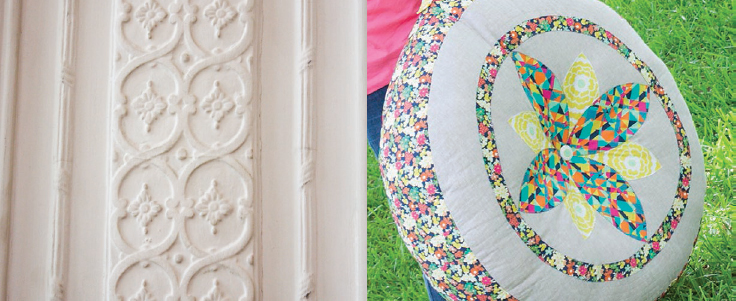 The small motif in this stonework inspired my floor cushion.
The small motif in this stonework inspired my floor cushion. 
Next page
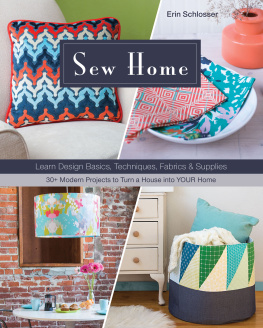





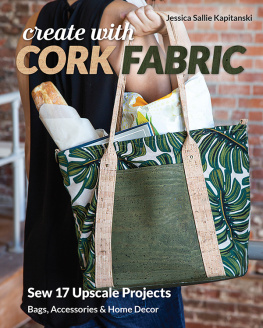

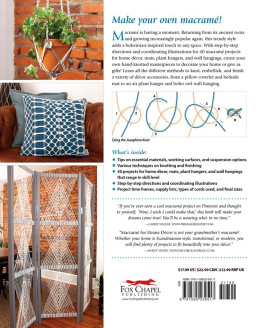
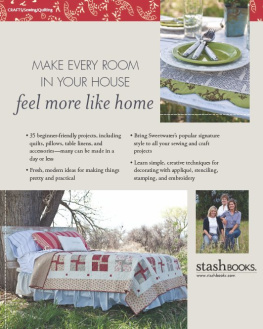
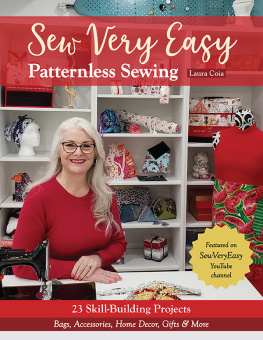
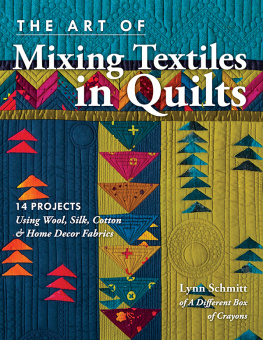
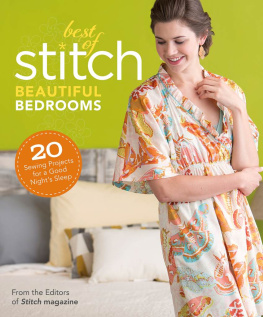
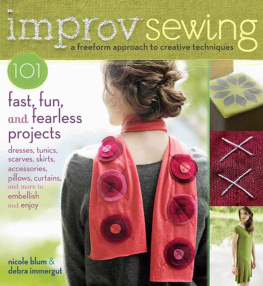
 This book is dedicated to all the makers, designers, doers, sewists, and DIYers out there. Go big, go bold, and listen to yourself when designing your space. After all, youre the one whos living there! Acknowledgments I want to thank my family for their never-ending support of my creative pursuits. Thanks to my dad and mom, from whom I got a perfect blend of work ethic, go-get-em attitude, and creativity; to my brother and sister, who provided inspiration and technical support; and most especially to my husband, whose gourmet cooking, endless support, and pep talks kept me going. Thank you to everyone at C&T Publishing for making my dream a reality.
This book is dedicated to all the makers, designers, doers, sewists, and DIYers out there. Go big, go bold, and listen to yourself when designing your space. After all, youre the one whos living there! Acknowledgments I want to thank my family for their never-ending support of my creative pursuits. Thanks to my dad and mom, from whom I got a perfect blend of work ethic, go-get-em attitude, and creativity; to my brother and sister, who provided inspiration and technical support; and most especially to my husband, whose gourmet cooking, endless support, and pep talks kept me going. Thank you to everyone at C&T Publishing for making my dream a reality. From the first quillow my grandmother helped me make, my love of functional sewing projects was born. Ever since then, I have loved sharing and discussing tips, techniques, and tricks with eager sewists. When I bought my first home, I made a list of all the custom household items I wanted to design and create, and the various sewing techniques that would be necessary. This became the genesis for this book and the projects you will discover here. Within these pages youll find inspirational projects for a variety of skill levels and for every room in your homewhatever your style. If youre not in the mood to pull out the sewing machine, you can make fun projects that dont require one, such as the Cornice Board or the DIY Rug.
From the first quillow my grandmother helped me make, my love of functional sewing projects was born. Ever since then, I have loved sharing and discussing tips, techniques, and tricks with eager sewists. When I bought my first home, I made a list of all the custom household items I wanted to design and create, and the various sewing techniques that would be necessary. This became the genesis for this book and the projects you will discover here. Within these pages youll find inspirational projects for a variety of skill levels and for every room in your homewhatever your style. If youre not in the mood to pull out the sewing machine, you can make fun projects that dont require one, such as the Cornice Board or the DIY Rug. This gorgeous tile floor illustrates a pattern, one of the elements of design. Space (positive and negative): Patterns and designs can be made from both positive and negative spacethat is, the space that is your subject and the space that is not your subject. Shape: The two-dimensional outline of a geometric figure (such as a circle or hexagon) or an organic form.
This gorgeous tile floor illustrates a pattern, one of the elements of design. Space (positive and negative): Patterns and designs can be made from both positive and negative spacethat is, the space that is your subject and the space that is not your subject. Shape: The two-dimensional outline of a geometric figure (such as a circle or hexagon) or an organic form. Both man-made and natural elements can be a source of inspiration. You can use your inspiration photos in a variety of ways. You can transfer color palettes, fabric patterns, and design elements to your interior space.
Both man-made and natural elements can be a source of inspiration. You can use your inspiration photos in a variety of ways. You can transfer color palettes, fabric patterns, and design elements to your interior space.  I loved the stonework pattern in the photo, and this inspired my main fabric choice.
I loved the stonework pattern in the photo, and this inspired my main fabric choice.  The small motif in this stonework inspired my floor cushion.
The small motif in this stonework inspired my floor cushion.